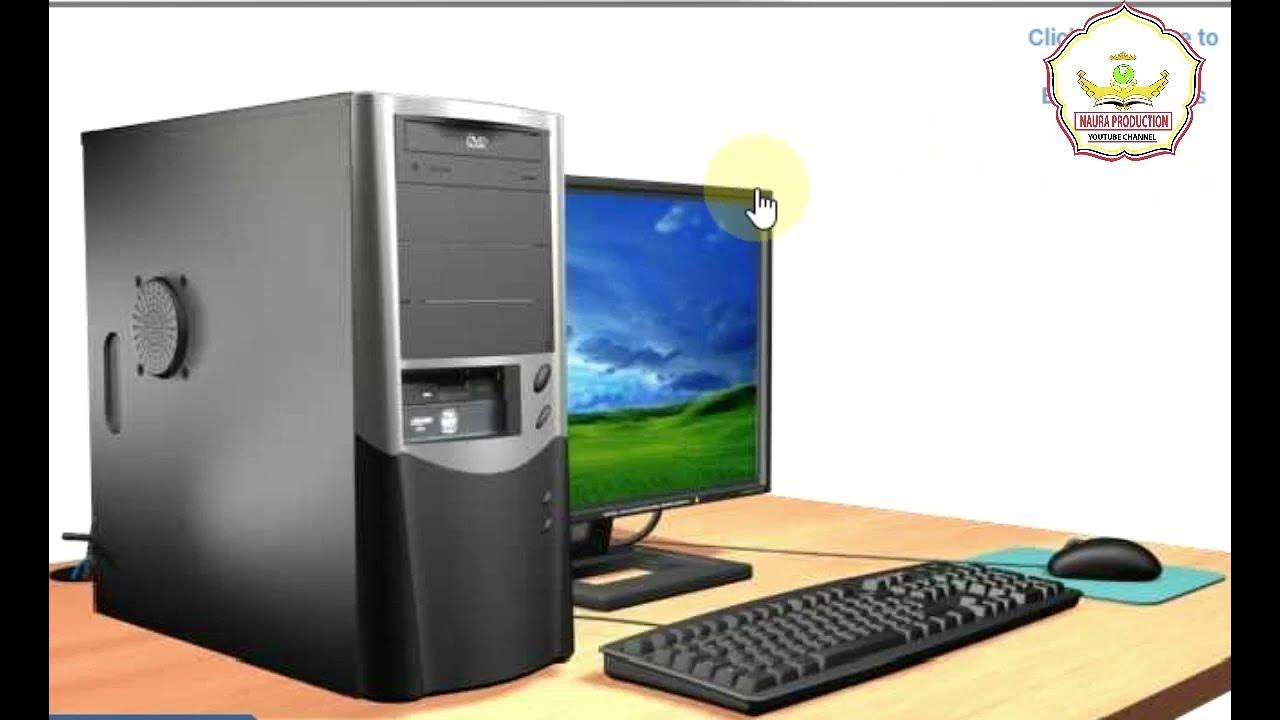Bagaimana Komponen pada Komputer Bekerja? 🖥 Mari Bongkar Semua Hardware pada PC
Summary
TLDRThis video takes viewers on a detailed journey inside a desktop computer, breaking down its hardware components with 3D animation. It explores the CPU, motherboard, power supply, GPU, RAM, SSD, and HDD, explaining their functions and intricate designs. With a nanoscale look at transistors and wiring, the video shows how these parts work together to make a powerful computing system. The video emphasizes the importance of engineering, technology, and interactive learning, and also promotes Brilliant, an educational platform for deepening knowledge in science and technology. It's an engaging and educational exploration of modern computer architecture.
Takeaways
- 😀 The video dissects a desktop computer using 3D animations, simulating a surgical exploration of the hardware components.
- 😀 The Central Processing Unit (CPU) is the brain of the computer, consisting of multiple cores, each performing complex operations like running programs and instructions.
- 😀 Each CPU core has billions of tiny transistors arranged in layers, creating a labyrinth of electrical pathways that enable high-speed computation.
- 😀 The motherboard acts as the central hub, connecting and facilitating communication between components like the CPU, GPU, memory, and storage.
- 😀 The power supply unit distributes electrical power to the computer, adjusting voltages for different components to ensure efficient operation.
- 😀 CPUs and GPUs have similar structures but serve different purposes: the CPU handles complex tasks with fewer cores, while the GPU performs parallel processing with thousands of simpler cores.
- 😀 The GPU has more than 10 billion transistors and is optimized for tasks like graphics rendering, with thousands of cores dedicated to simple mathematical operations.
- 😀 The video highlights the importance of power management components like VRMs, which regulate the power supply to ensure optimal performance and efficiency.
- 😀 Storage devices like SSDs and hard drives differ in speed and cost: SSDs are faster but more expensive, while hard drives are slower but offer more affordable storage per terabyte.
- 😀 The video emphasizes the role of education in understanding complex technologies, promoting platforms like Brilliant for interactive learning in science and engineering.
- 😀 The video also includes brief looks inside common peripherals like the computer mouse and keyboard, explaining how they work and their key components.
Q & A
What is the main focus of the video?
-The video explores the inner workings of a desktop computer by disassembling it and analyzing its hardware components using 3D animations and a nanoscale perspective.
What is the role of the Central Processing Unit (CPU) in a computer?
-The CPU is the brain of the computer, responsible for processing instructions and managing operations. It contains multiple cores that handle different tasks simultaneously.
How are the billions of transistors inside the CPU organized?
-The transistors in the CPU are organized into layers of metal wiring, forming a complex network that allows the CPU to perform billions of operations per second.
What is the purpose of the heat spreader in the CPU?
-The heat spreader is a metal cover placed on top of the CPU to dissipate the heat generated by the CPU's operation and prevent overheating.
What is the function of the chipset on the motherboard?
-The chipset connects the CPU to other components like RAM, storage devices, and peripherals, managing data flow between them and ensuring proper communication.
How does the power supply unit (PSU) affect the overall performance of the computer?
-The PSU provides power to the computer by converting high-voltage electricity from an outlet into lower, usable voltages for various components. Its efficiency impacts overall energy consumption and heat production.
What is the role of the VRM (Voltage Regulator Module) on the motherboard?
-The VRM is responsible for regulating the voltage supplied to the CPU and other components, ensuring they receive stable power at the correct voltage levels.
How does a GPU differ from a CPU in terms of processing capabilities?
-A GPU is specialized for parallel processing, with thousands of cores designed for handling graphics and simple arithmetic operations. In contrast, a CPU has fewer cores optimized for more complex, serial tasks.
What is the key difference between Solid State Drives (SSDs) and Hard Disk Drives (HDDs)?
-SSDs use flash memory to store data, providing faster read and write speeds, while HDDs use spinning disks and mechanical read/write heads, resulting in slower performance but offering more affordable storage.
What technology is used to improve data storage efficiency in modern SSDs?
-Modern SSDs use 3D NAND technology, which stacks multiple layers of memory cells to increase storage density and improve performance by reducing latency and power consumption.
Outlines

Cette section est réservée aux utilisateurs payants. Améliorez votre compte pour accéder à cette section.
Améliorer maintenantMindmap

Cette section est réservée aux utilisateurs payants. Améliorez votre compte pour accéder à cette section.
Améliorer maintenantKeywords

Cette section est réservée aux utilisateurs payants. Améliorez votre compte pour accéder à cette section.
Améliorer maintenantHighlights

Cette section est réservée aux utilisateurs payants. Améliorez votre compte pour accéder à cette section.
Améliorer maintenantTranscripts

Cette section est réservée aux utilisateurs payants. Améliorez votre compte pour accéder à cette section.
Améliorer maintenantVoir Plus de Vidéos Connexes

Bagaimana Cara Kerja Komponen Pada Komputer? 🖥 Menelusuri Cara Kerja Hardware pada PC

Sistem komputer kelas XII MANUBA

How does Computer Hardware Work? 💻🛠🔬 [3D Animated Teardown]

Travel Deep Inside a Leaf - Annotated Version | California Academy of Sciences

PENGENALAN KOMPUTER DESKTOP UNTUK PEMULA

How a simple mistake ruined my new PC (and my YouTube channel)
5.0 / 5 (0 votes)
